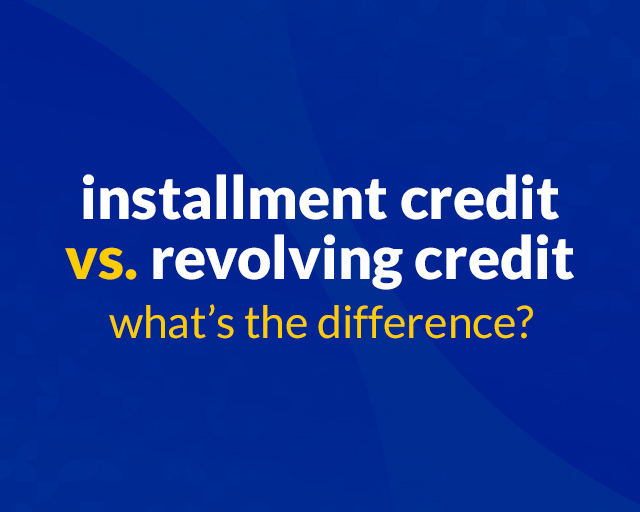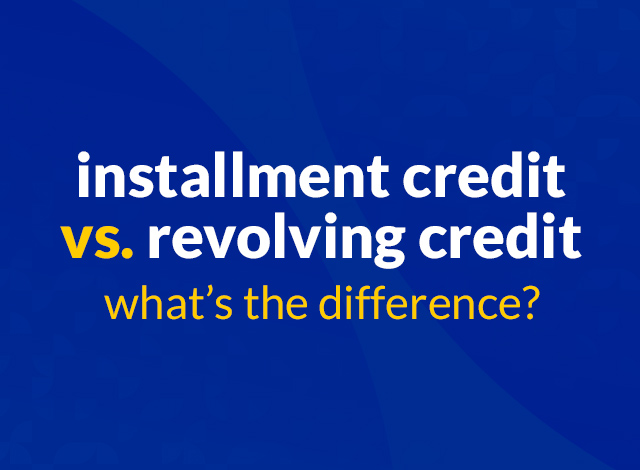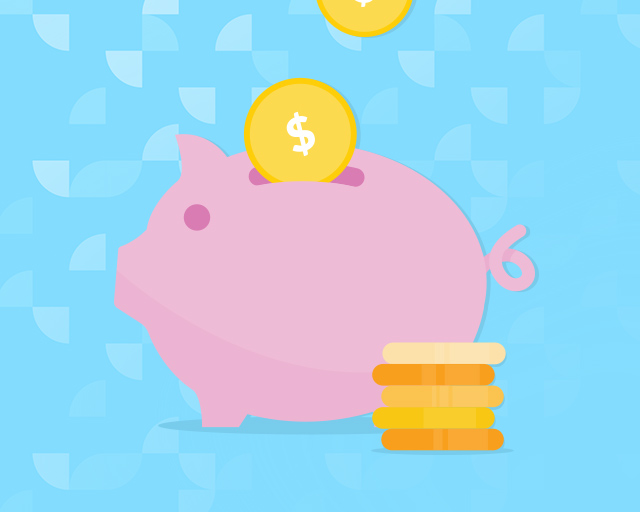

There are two common types of credit accounts: installment credit and revolving credit. But what‘s important about each one and how do they differ? We’re here to help explain each so you will be knowledgeable about both.
what is installment credit?
Installment credit is when you borrow an exact sum of money that you agree to pay back in fixed installments over a specific period of time. The payments that you make on your installment loan are based on the principal balance, which is the original amount borrowed, as well as interest that has accrued while you have the loan. In most cases, the amount you pay each month stays the same unless the terms of the loan change.1
three benefits of installment credit
1 collect a lump sum
By requesting and receiving a lump sum of money, you can put it towards a large purchase, an unexpected emergency or consolidating high-interest debt.2
2 fixed rate and payment
Most installment loans have the same interest rate and payment during the duration of the loan, which makes it easier to budget for since you know the amount you owe each month.2
3 flexible repayment terms
Depending on the type of installment loan, you can have a choice in how long you want it to be until you make your final payment. Choosing a shorter period of time means paying less interest and higher monthly payments while paying over a longer period of time means smaller monthly payments and more in interest.3
examples of installment credit2
- home mortgages
- car loans
- student loans
- personal loans
what is revolving credit?
Revolving credit is where you have an account that features an available credit line that you can use to borrow, pay back and then borrow again. This line of credit has a limit on what you can spend with that account at a given time. The amount you must pay each month on your revolving credit account is determined by what you have charged to it and the interest rate you have with that account.1
three benefits of revolving credit
1 borrow what you need
You have a credit limit on your account and are allowed to borrow any amount up to that limit. You only must pay back what you borrow, along with interest and/or fees.2
2 access to funds
Once you are approved for a credit limit, you’ll be able to access those funds to make purchases when you need to.3
3 high borrow limits
Revolving credit accounts can have higher loan limits depending on the type of account. But one thing to keep in mind is that you will have to pay back what you borrow eventually.3
examples of revolving credit2
- credit cards
- personal lines of credit
- home equity lines of credit (HELOCs)









